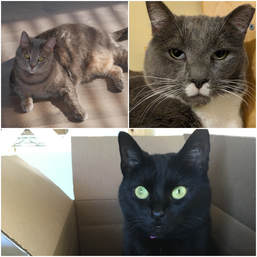 Alley Cat Rescue is proud to announce our launch of a “Working Cats” program. This program will place cats in local businesses and warehouses to assist with rodent control and office morale. These are cats who would be stressed out in a home or outdoors but could thrive hanging out in a warehouse all day or patrolling around a store. There are many benefits to having cats in workplaces. For warehouses, cats can provide a non-chemical and easy rodent control solution. Rat complaints are up in cities all around the country as mild winters lead to high populations of rats. Cats are known for hunting rats but even just having a cat around a building can scare rats away. In retail buildings, cats can become customer staples. The bodegas in New York City are famous for housing cats that customers come to visit. Further, no matter what office environment you work in a cat can provide for a cute way to de-stress while at work! Working Cats programs are growing throughout the country. There are currently programs such as ours in New York City, Chicago, Baltimore, Los Angeles, Phoenix and other cities. If you are a business owner who is interested in getting a working cat or know of a business who would like a cat, please contact us at 301-277-5595. Our working cats are spayed/neutered, vaccinated and microchipped. Adopters must provide the cats with food, water, shelter and long-term vet care. Adopters should also have a transition plan for putting the cats into the workplace. Christensen, J. (July 15, 2016). Are cats the ultimate weapon in public health? Retrieved from http://www.cnn.com/2016/07/15/health/cats-chicago-rat-patrol/index.html Frenden. M. (n.d.). Barn Cat 101: Starting a Barn Cat Program in your Community.
0 Comments
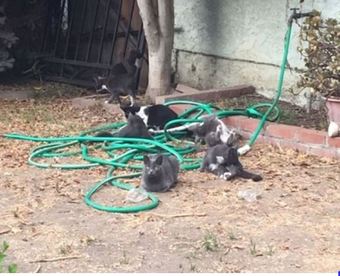 This year Alley Cat Rescue was involved in many on-the-ground rescues. One of these rescues was in south central Los Angeles, where we learned a colony of cats were living. We quickly responded and sent a team out to help these cats. This colony of cats was easy to find as they were hanging out on the sidewalk when our team arrived. It was almost like they were waiting for us to come help them. Most of the cats in this colony were a variation of a beautiful grey and white pattern. It is likely that there was a mother cat with multiple litters of kittens living in the colony together. This unmanaged colony of cats had started off with just two or three cats a year ago but quickly grew to over 15 cats. Instances such as this are an important reason TNR is so vital. Small colonies of cats can rapidly expand in size if the cats are not sterilized to prevent reproducing. When we arrived we were greeted by some of the friendlier cats, while the unsocialized ones kept their distance. The adult cats were TNR’d and the kittens were young enough to be adopted out. Unfortunately, a couple of the kittens were in poor health when we found them and were suffering from severe URI infections. We provided the kittens with veterinary care for the URIs and hot compresses, antibiotics and ointments for the eye infections. The kittens recovered amazingly and we have found homes for eight kittens so far. We are still learning how large this colony of cats is and will be continuing our rescue efforts until all the cats are TNR’d. Two cat caregivers have been found who will care for the community cats after the rescue efforts are complete. Without TNR, the future of these cats could have been bleak. ACR works to promote TNR throughout the United States and internationally. Currently, Los Angeles is re-evaluating their policy on TNR. In the past, the city has supported TNR and has provided vouchers for community cat spay/neuter surgeries, issued trapping permits and provided referrals to community cat groups. The city was forced to halt their support of TNR after a lawsuit by environmental groups succeeded in court. The city has prepared a new project proposal to continue to promote TNR but this proposal is currently under an Environmental Impact Report review. We hope the program will be approved by the city. We have seen firsthand the impact TNR can have for cats in Los Angeles and support from the city will be essential for continued TNR work by cat protection groups and individuals. 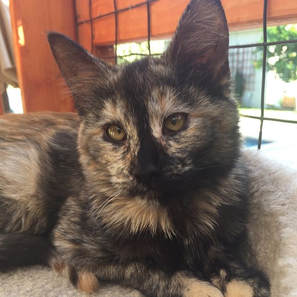 In early November we were alerted of the plight of a 4-month old blind kitten at a shelter in San Bernardino who needed help. She was placed at a shelter with a low live release rate and was at risk of euthanasia. At first, multiple people came forward to foster her. The shelter called to inform us that none of the fosters had come to take Ruby by the end of the designated time frame. We rushed down to the shelter to save Ruby before her rescue hold time ran out and she would be euthanized. We took her to a vet who diagnosed her with malnourishment and cataracts on both eyes. She was unable to get shots because she was half the weight she should have been at that age. She was full of worms, parasites and covered in fleas. Ruby, underweight and very frail, was unable to receive any vaccinations. With constant care and love she slowly gained weight, over 1.3 pounds in just 2 weeks, improving her overall health! Once she was on the road to recovery we scheduled an exam for her eyes and it was confirmed that she is nearly blind. Feline eye specialists explained she has full cataracts in both eyes, and her vision is limited to light and dark shapes, yet her diagnosis is promising. The cause of the cataracts is due to her malnourishment. Even though Ruby is 95% blind in the left eye and 85% blind in the right eye, with care, treatment and surgery she will be able to see again. Left untreated the cataracts, can come loose and detach leading to glaucoma (painful increased intraocular pressure) and then blindness. We will continue to care for Ruby until she has gained weight and is healthy enough to undergo surgery. We have rescued many cats with special needs over the years. If a cat will not suffer and can be treated, we believe in providing these special needs cats with a chance at a forever home. Ruby has already improved exponentially and we are optimistic she will find a forever home. Ruby’s surgery and veterinary care will cost over $6,000. Any donations would be appreciated to help us care for this special and loving cat. You can donate here and interested adopters can contact our organization. 12/13/2017 Anne Arundel County Residents: Ask your Council member to support Bill No. 96-17Read NowAnne Arundel County is currently considering a bill (Bill No. 96-17), introduced by Congressmember John Grasso, that would provide humane guidelines for cat caretakers and animal control officers. This bill defines important terms such as community cat, community cat caregiver and eartipping. It also exempts eartipped cats from impoundment by animal control and allows cat caregivers to pick up community cats that become impounded without having to prove ownership or pay the applicable fees. Community cats will be held for at least five days unless they are “extremely aggressive, seriously injured, or suffering.” Anne Arundel County currently has no ordinances applying to trap-neuter-return. This bill will provide clarity and enable cat caregivers to implement TNR.
The most recent statistics available from Anne Arundel County’s Animal Control website from July-September 2017 indicate that a large amount of time, money and resources are used to handle community cats. Animal control stated that unowned cats compromise 17% of their intake and 70% of their euthanasia, excluding owner requested euthanasia. Research shows that community cats can live long, healthy lives outdoors with proper care. It is unnecessary and wasteful for animal control to use so many resources on euthanizing these cats. ACR urges Anne Arundel County residents to tell their city council member that they support Bill No. 96-17! This bill may be voted on as soon as 12/18/17. Some talking points to consider:
Anne Arundel County Animal Control. (n.d.). Retrieved from http://www.aacounty.org/departments/animal-control/forms-and-publications/survey-form-july-sept-2017.pdf Best Friends Animal Society. “New Research Exposes High Taxpayer Cost for Eradicating Free-Roaming Cats.” Best Friends Animal Society. N.p., 18 Mar. 2010. Web. 12 Aug. 2014. Edinboro, C, Watson, H, Fairbrother, A. (2016). Association between a shelter-neuter-return program and cat health at a large municipal animal shelter. Journal of the American Veterinary Medical Association, 248(3), 298-308. Fairfax County Police Department. (January 19, 2012). Trap, Neuter, Return Program Decreases Homeless Feral Cat Population. Retrieved from https://www.fairfaxcounty.gov/police/news-releases/2012/011912trapneuterreturn.htm Ireland, T. & Neilan, R.M. (2016). A spatial agent-based model of feral cats and analysis of population and nuisance controls. Ecological Modelling, 337, 123-136. Letters: Animals’ welfare improving in Indy. (October 12, 2017). Retrieved from https://www.indystar.com/story/opinion/readers/2017/10/12/letters-animals-welfare-improving-indy/757506001/ Stoskopf, M. K. & Nutter, F. B. (2004). Analyzing approaches to feral cat management — one size does not fit all. Journal of the American Veterinary Medical Association 225, 1361–1364. 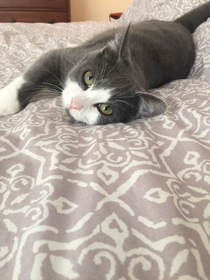 Alley Cat Rescue is searching for a home for a rescued kitten in Los Angeles for the holidays. ACR rescued ten kittens from an outdoor colony altogether. Now all of Jack’s brothers and sisters have found a home and he is still searching for a family. ACR was alerted to a large colony of cats living in south central Los Angeles. A team was quickly sent out to help these cats. This cat colony was easy to find as they were hanging out on the sidewalk of a very busy street when the team arrived. It was almost like they were waiting for help to come. Most of the cats were a variation of a beautiful grey and white pattern. It is likely that there was a mother cat with multiple litters of kittens living in the colony together. This unmanaged colony of cats had started off with just two or three cats a year ago but quickly grew to over 15 cats. The adult cats were TNR’d and the kittens were young enough to be adopted out. ACR is still learning how large this colony of cats is and will be continuing rescue efforts until all the cats are TNR’d. Since the rescue efforts, ACR found adopters for all of the kittens except one. Somehow Jack has been overlooked, which is surprising considering his loving personality and beautiful coat. This 7-month old boy loves to chase his toy mouse, hang out with the foster family and roll over and show his belly. After a long day, Jack is ready to jump into bed and cuddle with his foster mom. His foster mom describes him as a “super sweet, chill kitty with the softest coat.” If you’d like to provide this boy a home, contact Alley Cat Rescue through our online inquiry form. |
Details
AuthorAlley Cat Rescue is leading in the way in promoting humane and compassionate care for ALL cats. Archives
June 2024
Categories
All
|
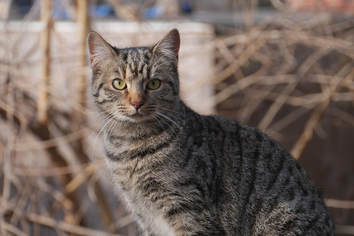
 RSS Feed
RSS Feed